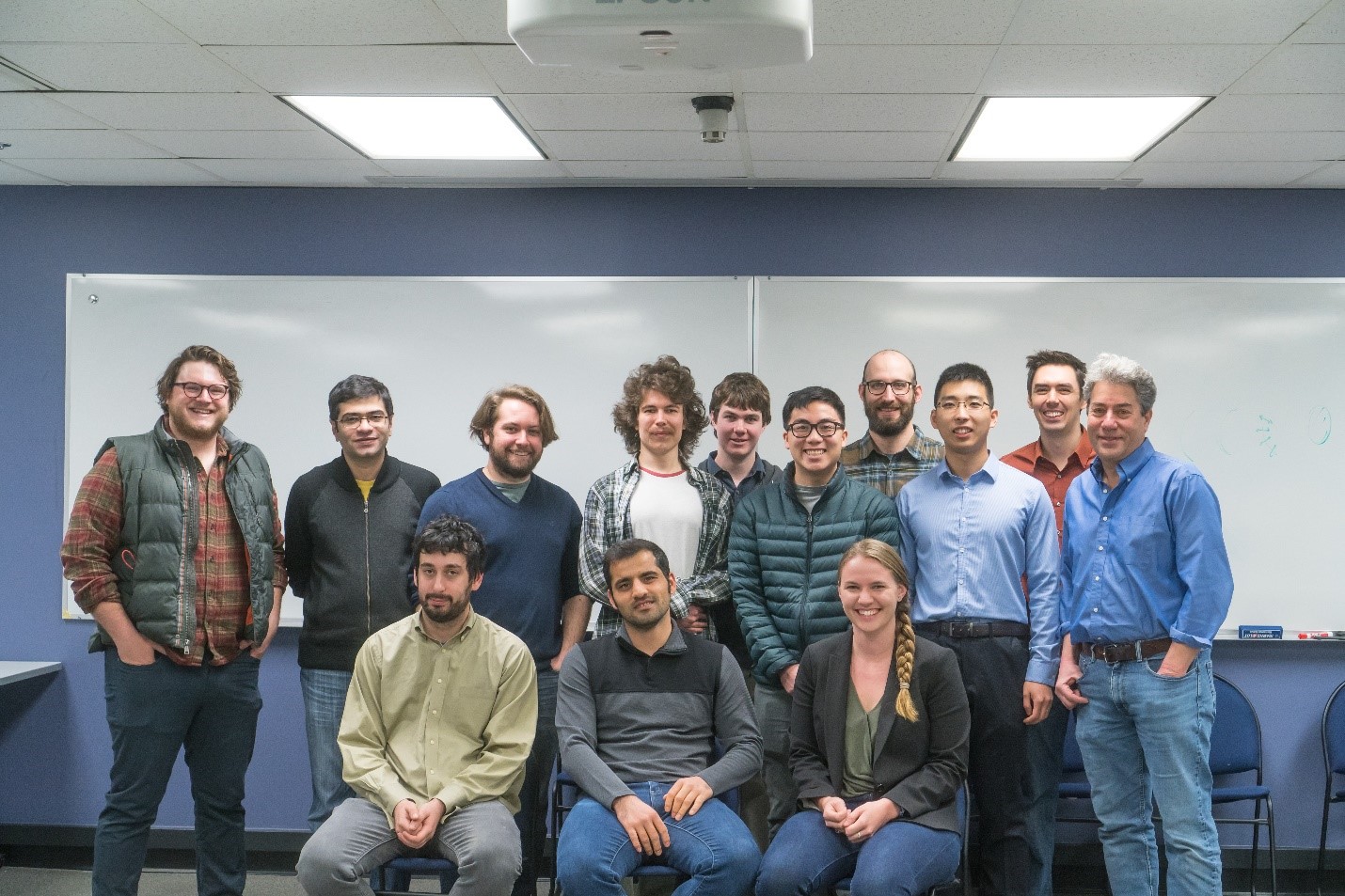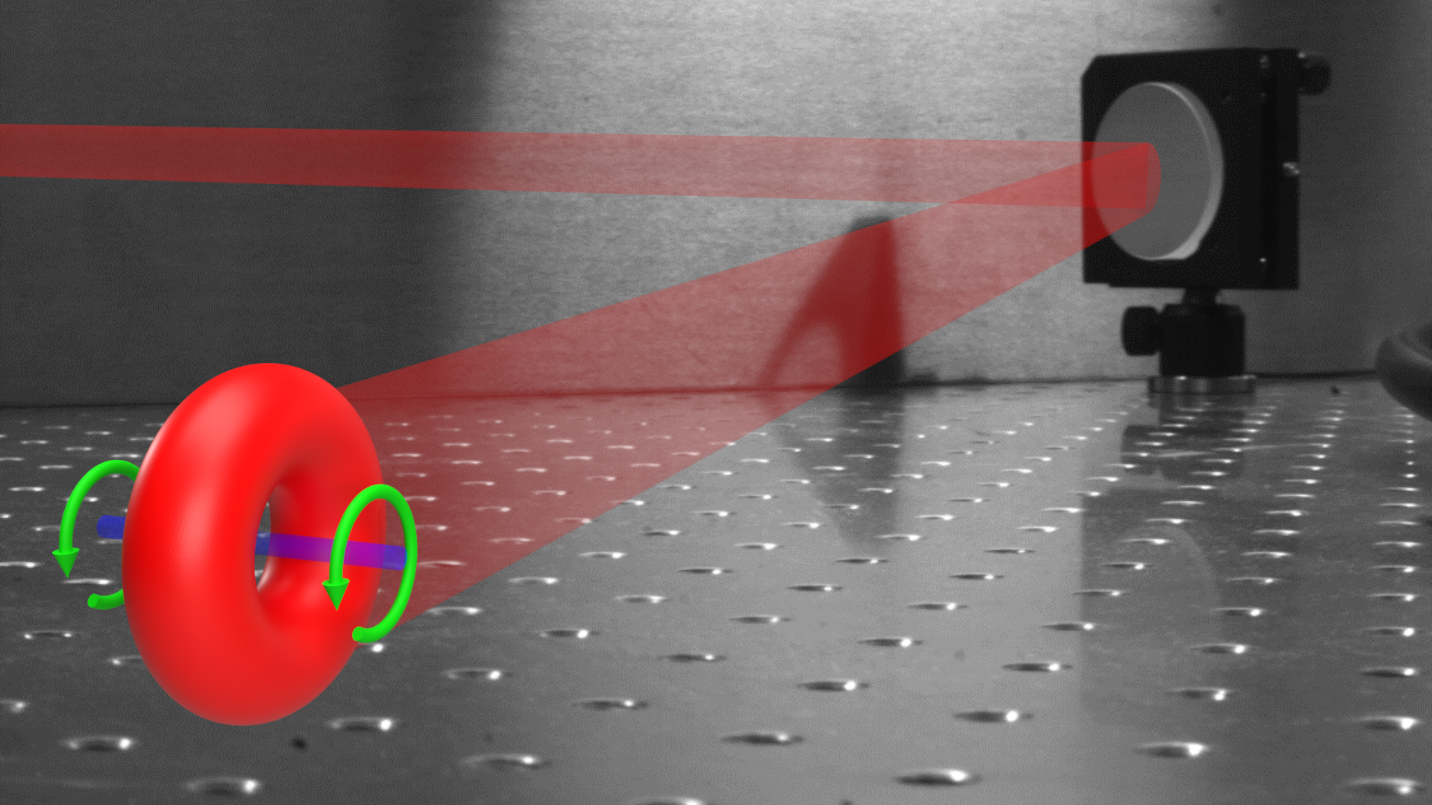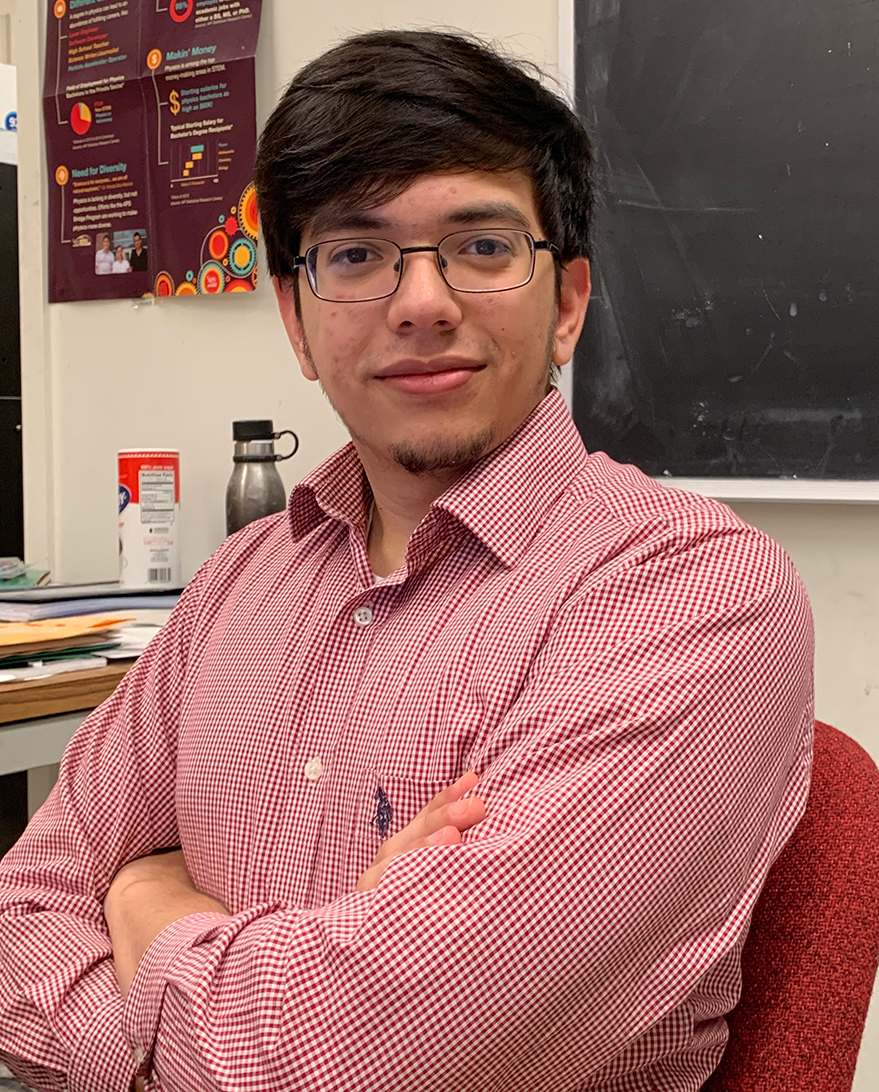Despite Pandemic, Physics Lab Courses Go On
- Details
- Category: Department News
- Published: Monday, February 08 2021 05:33
Lab courses are where physics students learn firsthand that reality, even the one carefully curated by their instructors, is messy. Scales need to be recalibrated, projectiles hit lab benches instead of completing perfect arcs, and there’s always a mysterious source of issues popularly known as human error. Students traditionally tackle experiments in person, either individually or in pairs, on pre-arranged experimental stations. These are difficult things to replicate online or even in a physically distanced environment.
Nevertheless, when the pandemic hit, the UMD Department of Physics’ lab courses moved online for spring and summer 2020. And after the campus reopened in the fall, many of the lab courses were offered in person again, with a multitude of safety precautions and—perhaps most importantly—without any known spread of COVID-19.
A small cast of dedicated department staff members worked hard to pull it all off. One key figure is Allen Monroe, the assistant director of physics instructional labs, who has been at UMD for 43 years. Monroe first started working for the department in 1978 while he was still in high school.
“They called me a gopher,” said Monroe, “because I would ‘go for’ this and ‘go for’ that.”
He was hired to run the labs for classes taken by physics majors in 1984 and has remained here ever since. During this time, he went from lab manager to lab coordinator to assistant director, and he earned a bachelor’s degree in industrial education in 1994 from UMD.
Monroe says remaining at the university for this long has been easy.
“There's always something new to learn,” Monroe said. “And it's always something different. It’s fascinating. And at this point, I’m seeing the whole picture.”
The whole picture can be pretty overwhelming.
“During a typical semester up here, I've got 2,000 students roaming through these hallways going through these labs every week,” Monroe said.
When the university moved to online classes in March, each instructor handled the situation differently: some asked students do simulations, while others provided students data to be analyzed. But this wasn’t going to work for an entire course. Monroe needed to begin planning for summer classes, which would be taught entirely online. Migrating the whole operation to Zoom was an enormous and time-sensitive undertaking—there were lab courses starting in under two months.
“We had to work very quickly,” said Monroe, “because, you know, this was early April and we had to have this stuff ready for June 1.”
But even with his decades of experience, Monroe says he could not have done it alone. He relied on Physics Professor and Joint Quantum Institute Co-director Frederick Wellstood, who has been a mainstay of the department’s labs for decades. Wellstood first began designing lab courses in the mid-1990s with Distinguished University Professor of Physics Jordan Goodman and continued to do so after he became associate chair of undergraduate education in 1999. After he left that post in 2004, he remained the go-to physicist for all lab-related things.
“This is my secret side job, this is my night job,” Wellstood said.
For more than 20 years, he designed and reinvented much of the UMD physics lab curriculum. So last spring when Monroe needed help, Wellstood stepped up to the plate.
Not only did Monroe and Wellstood have to work quickly, they had to thread a fine needle. Students needed to be able to follow the experiment without actually being in the lab, and they also needed to stay engaged and not simply watch projectiles being thrown for them.
“You don't want the students to sit there and for their first thought to be ‘This is stupid,’” Monroe said. “So you have to kind of make it interesting.”
Wellstood and Monroe decided to go for an amalgam approach wherever possible. Wellstood filmed himself doing several versions of data collection, like sending projectiles along a few different paths. The students would choose one of the experiments, watch their chosen video and analyze the corresponding data themselves.
Once the summer courses were humming along, Wellstood and Monroe immediately started preparing for the fall. They had to figure out how to quickly convert a lot more courses to online versions, as well as how to prepare for safe if partial, return to campus.
“We were in major survival mode, or firefighting mode,” Wellstood recalled.
A team headed by Professor and Associate Chair of Undergraduate Studies Carter Hall, Director of Student Services Donna Hammer, and professors Sarah Eno, Dan Lathrop and Kara Hoffman pitched in, obtaining a grant from the Provost’s office that allowed them to hire physics graduate student Brandon Johnson and undergraduate physics major Robert Wolle to record videos of themselves doing experiments and create online versions of the lab instruction manuals.
For the courses that were small enough to be held in person, Monroe wrote up safety protocols that were approved by the university. He put fans in all the windows, spaced out the experimental stations as much as possible, and converted some of the courses to a partial schedule, with alternating halves of the class coming in each week. If students ran into trouble doing one of the in-person labs, they would call their teaching assistant via Zoom, from their station to the front of the class, to avoid putting either the students or teaching assistant at risk.
Even with all the preparation, unpredictable problems arose.
“We used to run from 8 or 9 in the morning until 10 at night,” Monroe said. “In between every one of these sections, we had to go in and sanitize the room. And that all worked pretty good until we found that we were wiping the lettering off of keyboards.”
They did some research and switched to a less-abrasive cleaning product.
By putting in many extra hours and taking advantage of everything at their disposal, including online lab manual distribution tools, partial schedules and physically distanced in-person protocols, they pulled off a successful fall semester.
“It worked reasonably well,” said Wellstood, “which means it didn't catch fire and burn down. You know, we actually got through it.”
Both Wellstood and Monroe also credit the ensemble of people that made it all possible. Labs are staffed by Omar Torres, Greg Wolter and Catherine Owens.
“We’ve tried to make sure that we can offer in-person experiments where it's possible,” said Wellstood, “and I think it’s a credit to the university that they let us try. And it’s a credit to the instructors.”
Monroe and Wellstood were ready when in-person spring classes began this week, and they’re proud of what they’ve pulled off thus far, but they both agree this past year has been extremely tough.
“I'm looking forward to being able to open up again someday,” said Monroe, “because oh boy, it's exhausting.”
Written by Dina Genkina



